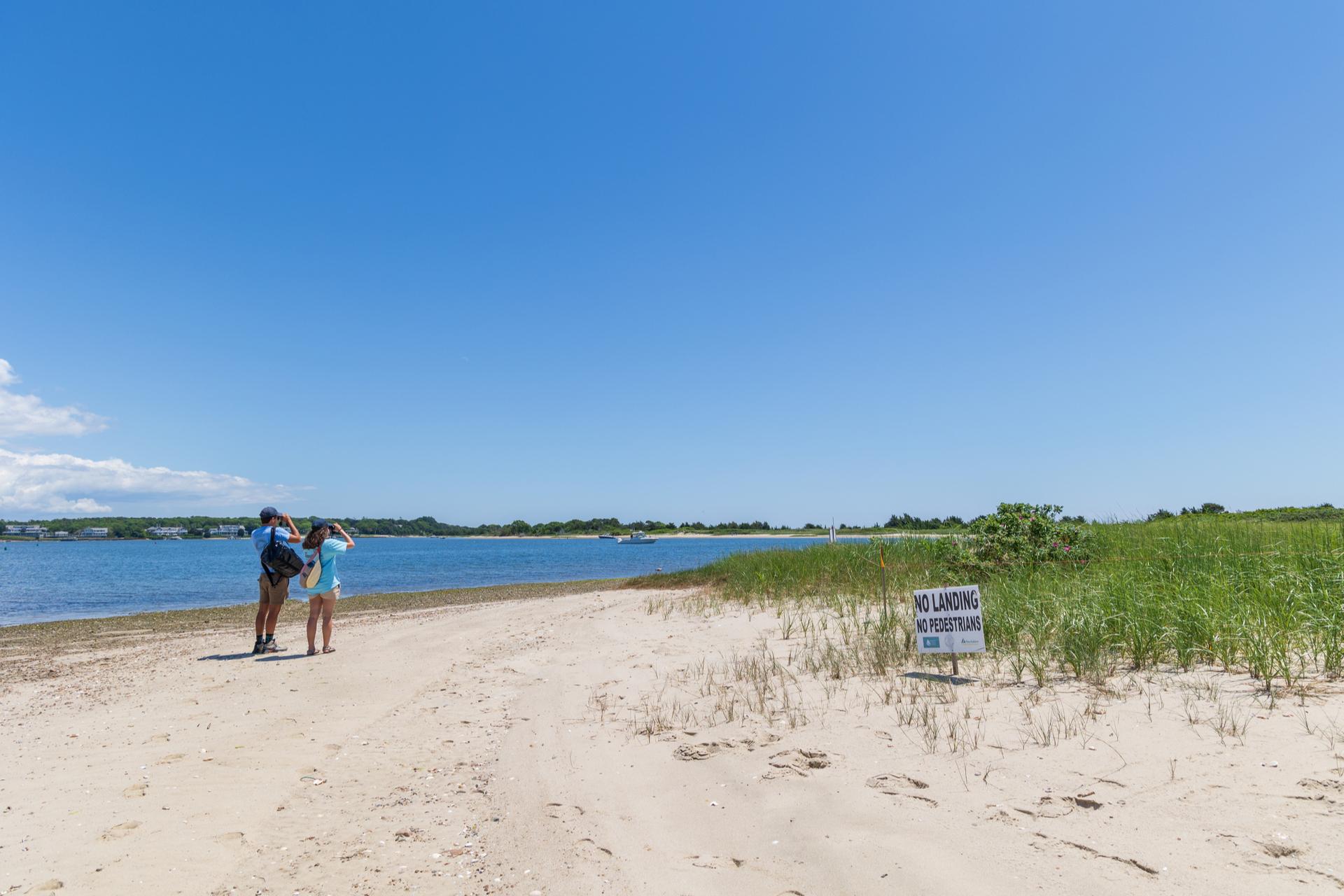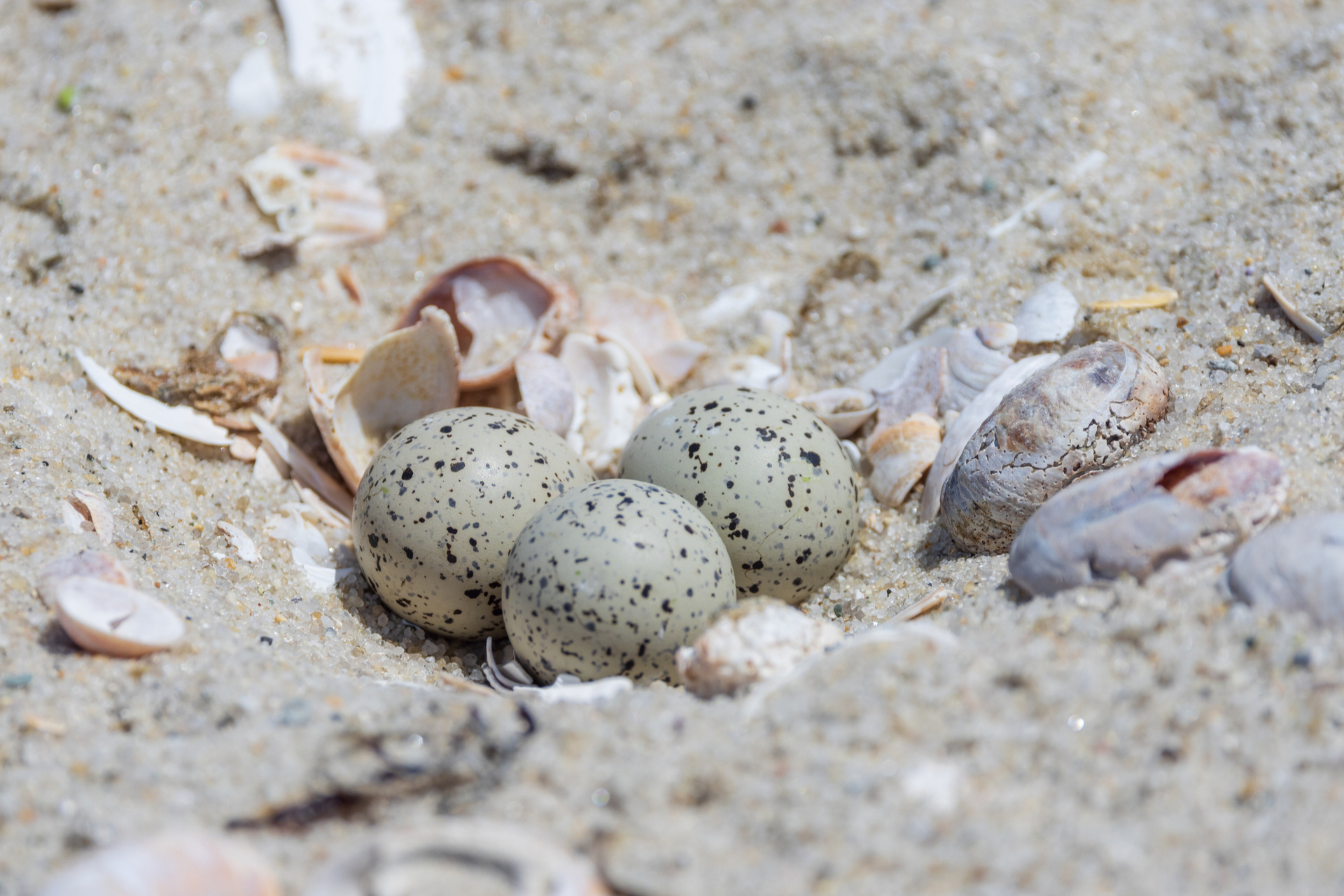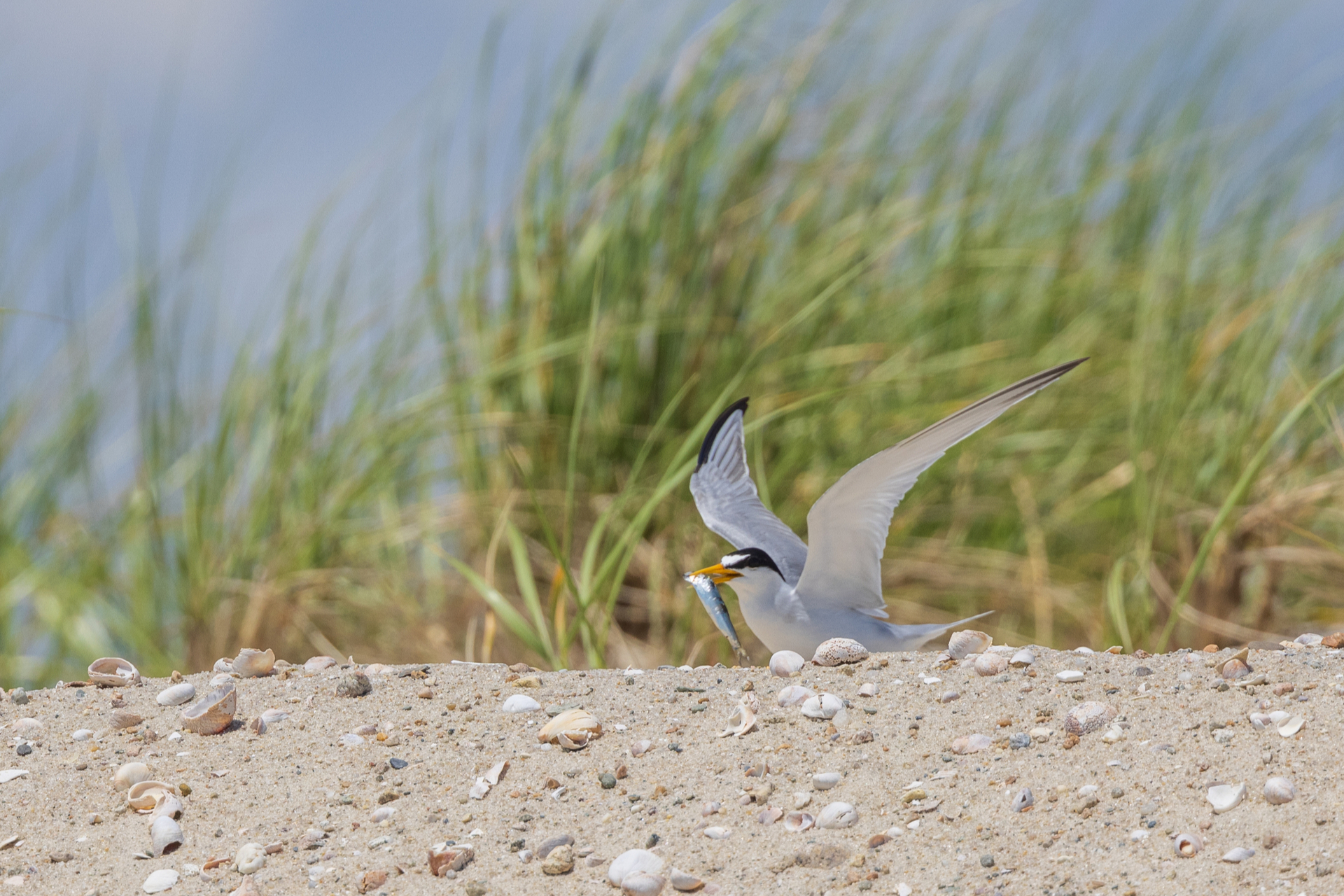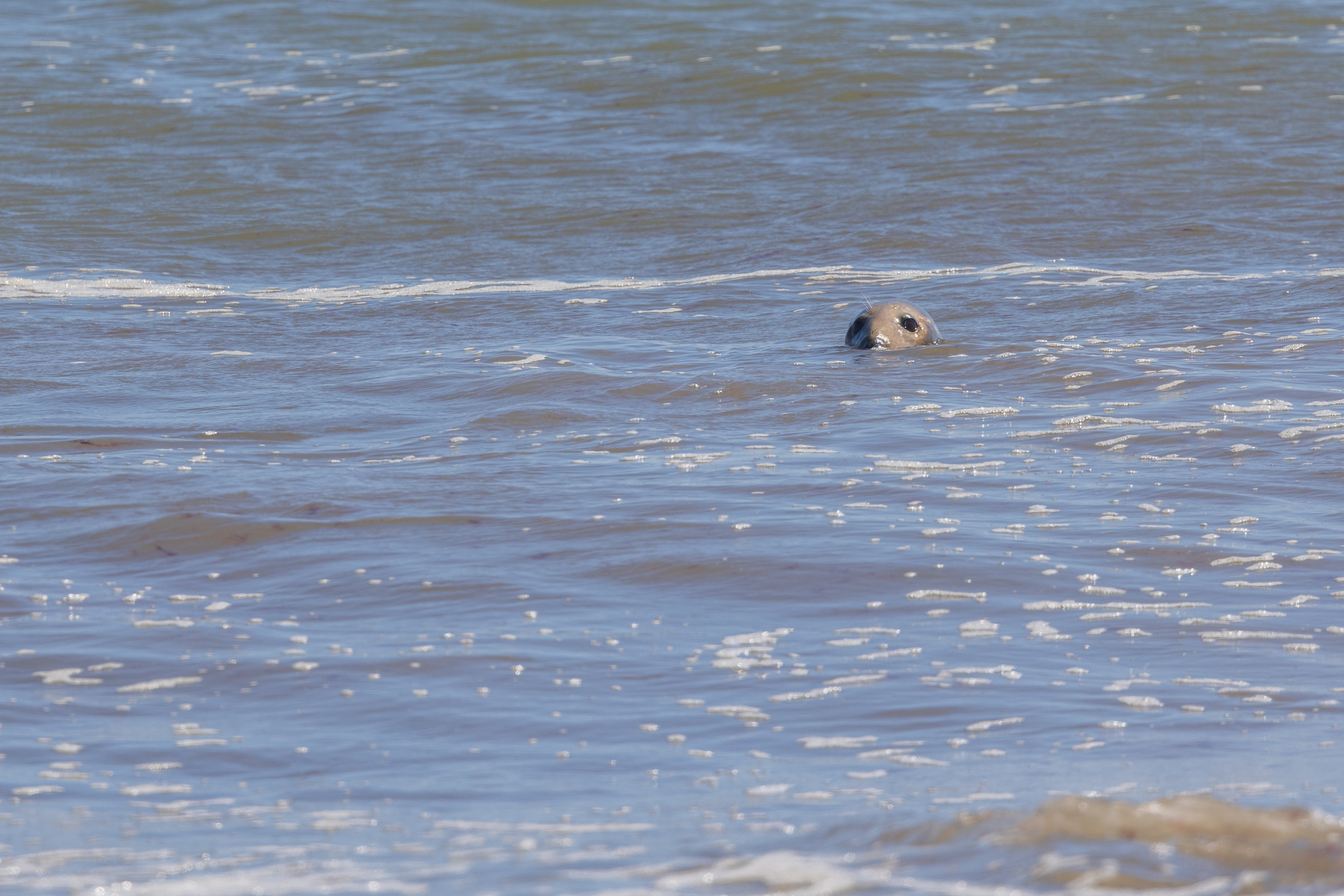In 1986, Mass Audubon established the Coastal Waterbird Program to protect and advocate for the threatened and endangered shorebirds of Massachusetts. Since then, we have monitored close to 140 miles of beach every year, protected thousands of birds, and promoted information about shorebirds to beachgoers across the state.
Rose Caplan, field coordinator for the Coastal Waterbird Program, provides a sneak peek of what it’s like to be a coastal waterbird monitor.
5:30 am
My alarm goes off bright and early. It took some time to get used to waking up so early, but it’s worth it—I quickly learned that is when most of the birds are calling. I am eager to start my day.
Before I go, I need to put on the proper field dress and collect all the gear I need. Since I work outdoors, I need to be prepared for changing weather, locating new shorebird nests, and supporting a healthy beach ecosystem. At any given time, my car is filled with fence posts and signs for symbolic fencing. We use symbolic fencing to block and protect any new nests and young chicks that have popped up on shore.
7:00 am
The first thing I do is test if the sand is dry. We don’t monitor in wet conditions because we can leave scents that unintentionally help lead predators, like wily coyotes, to the nests and chicks.
7:15 am
I check that the sun is still low in the sky and confirm the temperature at my site. We avoid disturbing birds, even the tiniest bit, when it’s very hot or cold to make sure the delicate eggs and chicks are not exposed to poor weather conditions. I even tend to check the wind speed to make sure it’s calm.
7:20 am
I walk to a quiet spot on the beach outside the fencing to look for shorebird activity. I need to be far away enough that I don’t disturb the birds. A nest is due to hatch on this beach today: It’s been incubating for 26 days!
When working with Piping Plover nests, I keep my ears and eyes wide open to see or hear hatchlings. Piping Plovers are small, sand-colored shorebirds that nest directly on the beach in shallow indentations. Many plovers nest on busy beaches, which is why I helped erect symbolic fences back in April to keep the nest and adults safe from accidental trampling or disturbance.
7:30 am
My eyes continue to scan the beach while I search for the faintest peep and scan for any movement. It’s possible that the nest was lost overnight to a predator. My heart rate increases as I remember the time that I found a nest that had been predated by a crow. There were crow tracks all around it and the eggs were gone.
7:45 am
Relief washes over me as I finally see the plover chicks scurrying along the shoreline. I am especially proud when I watch the adult plover call and see all four of her chicks tuck up underneath her as she broods them and keeps them safe.
8:00 am
I move on to another section of the beach where yellow-billed Least Terns are nesting. One of my favorite sounds is the sweet kweep of Least Terns calling out over the beach. These birds can be fierce— they nest in big groups and help protect onte another by dive-bombing if you get too close—so I always keep my distance and count incubating adults from afar.
8:15 am
After counting and looking at the Least Terns, I scan the far side of the beach for a pair of nesting American Oystercatchers. I have a much easier time finding oystercatchers with their bright orange beaks and sweeping wheep call.
8:30 am
Earlier, I noticed a section of fencing that was washed away. I trek back to my car, gather the fencing supplies, and carefully walk to the fencing. I add in more signs that share information about the birds and use bright orange twine to connect the posts. This ensures that people keep away from these vulnerable nests and chicks.
9:00 am
Once the fencing is finished, I go back to my binoculars and settle in for a few more hours of monitoring. I take notes on how many chicks and adults I see, any new eggs, and any hatchlings lost. I even see a big Grey Seal swimming in the surf just a few meters off the beach. Maybe he’s monitoring me while I monitor the plovers!
11:00 am
A couple walking along the beach take notice of me and make their way to where I am monitoring. They curiously ask what I am doing and why there are fences. I talk to so many people on the beach every day—residents, people on vacation, day-trippers, and more.
Many people can’t believe how many protected shorebirds use the same beaches as we do. I share my general advice: Always follow the beach rules and give the birds plenty of distance so they can engage in their natural behaviors. Both will help adult birds raise their families on the beach.
12:00 pm
Before I pack up my belongings, I record my findings in our online data system and share any updates with my colleagues. Another thick layer of sunscreen is applied and I’m off to grab a quick lunch before heading to my next site nearby, where I begin monitoring all over again.
Protecting Coastal Waterbirds Together
Mass Audubon's Coastal Waterbird Program (CWP) is one of the most effective entities working to protect coastal birds and barrier beaches in North America. The program helped to recover the number of nesting Piping Plovers in the state from 135 pairs in 1986 to 1,032 pairs in 2022—more than 50% of the entire Atlantic Coast population. To do this, the Coastal Waterbird Program has trained over 1,500 staff, including Rose Caplan, to monitor beaches and conduct educational programs. Together, we can protect these beloved birds for years to come.
Stay Connected
Don't miss a beat on all the ways you can get outdoors, celebrate nature, and get involved.






